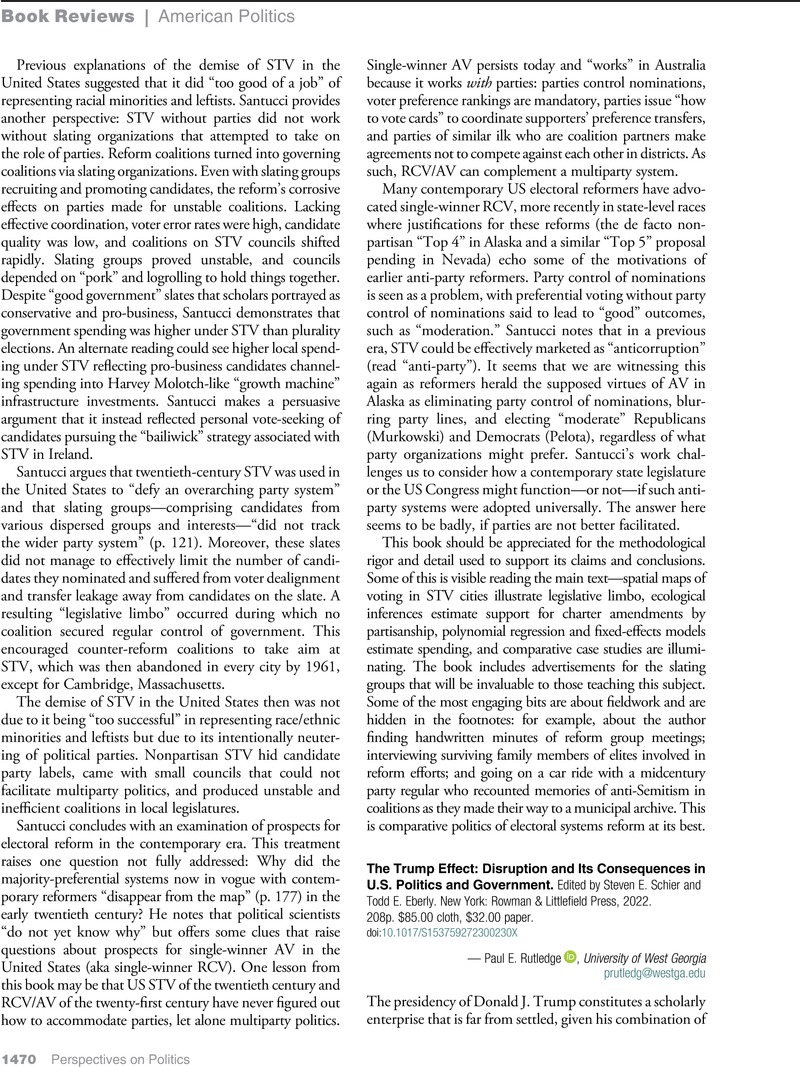No CrossRef data available.
Article contents
The Trump Effect: Disruption and Its Consequences in U.S. Politics and Government. Edited by Steven E. Schier and Todd E. Eberly. New York: Rowman & Littlefield Press, 2022. 208p. $85.00 cloth, $32.00 paper.
Review products
The Trump Effect: Disruption and Its Consequences in U.S. Politics and Government. Edited by Steven E. Schier and Todd E. Eberly. New York: Rowman & Littlefield Press, 2022. 208p. $85.00 cloth, $32.00 paper.
Published online by Cambridge University Press: 01 December 2023
Abstract
An abstract is not available for this content so a preview has been provided. Please use the Get access link above for information on how to access this content.

- Type
- Book Reviews: American Politics
- Information
- Perspectives on Politics , Volume 21 , Issue 4: Special Section: Methods, Ethics, Motivations: Connecting the How and Why of Political Science , December 2023 , pp. 1470 - 1472
- Copyright
- © The Author(s), 2023. Published by Cambridge University Press on behalf of the American Political Science Association


